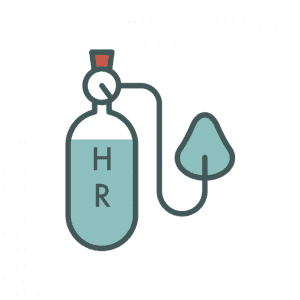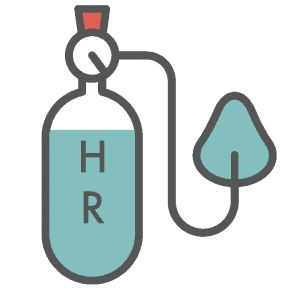This guide will help you plan your organisation’s next steps as lockdown measures ease or following a period of furlough
The CIPD is urging businesses to ensure they can meet three key tests before bringing their people back to the workplace and Meraki HR would encourage its clients to follow these 3 same principles;
- Is it essential? If people can continue to work from home employers should at least consider continuing to do that for the foreseeable future. If they cannot work from home, is their work deemed essential to your business operation or could the business continue to use the Government’s Job Retention Scheme for longer, giving them the time needed to put safety measures and clear employee guidance and consultation in place?
- Is it sufficiently safe? Employers have a duty of care to identify and manage risks to ensure that the workplace is sufficiently safe to return to. Employers should take their time with gradual returns to work to test health and safety measures in practice and ensure they can work with larger numbers before encouraging more of their workforce back.
- Is it mutually agreed? It’s vital that there is a clear dialogue between employers and their people so concerns, such as commuting by public transport, can be raised and individuals needs and worries taken into account. There will need to be flexibility on both sides to accommodate different working times or schedules as ways of managing some of these issues.
Returning to the workplace
How you manage a return to the workplace will depend on the type of closure arrangements you have been operating. The business may not have been trading at all (with all staff furloughed), or it may have been trading on a limited basis (with some staff furloughed, some working from home or in the workplace). Alternatively, only ‘essential’ workers may be in work or the business may be trading fully with all staff in the workplace or with some working from home. Whichever of these is closest to your individual business, there are some common issues you will need to address.
All workplaces need to observe the Government’s social distancing guidance which seems highly likely to continue for some time to come; the Prime Minister indicated that social distancing will stay in place for now but may be ended from as early as November or December.
Employers have discretion from 1 August to decide if all staff in office-based businesses who can work from home should carry on doing so or whether they will return to the workplace. Employers must keep themselves fully up to date with the current situation, including local outbreaks.
Employers must take an individualised approach and we are recommending that employers follow the 3 key principles already stated, Is it Essential, Is it Safe and has it been Mutually Agreed? This will involve taking into account many factors including the size and nature of their workplace, numbers of vulnerable staff or those who live with vulnerable people, caring responsibilities, public transport dependency, local outbreaks and second wave. For example, an employer with a large premises and car park may be able to fully implement social distancing and minimise employees’ local transport use, whereas an employer with smaller premises may feel social distancing is impossible in the workplace.
Making the decision
Re-opening of offices and workplaces for staff who have been working remotely has been firmly delegated by the government to employers, so that you can decide how staff can work safely. There are four main options:
1. Continue working from home until social distancing is relaxed
Employers can use their coronavirus specific risk assessments to assist in their decision making process. This will entail considering the factors referred to above, including the feasibility of implementing social distancing and local outbreaks (if any). As employers with workforces that cannot work from home have found, adapting premises to accommodate all staff returning on a socially distanced basis is highly challenging. Employers who have been mostly closed with productive and successful homeworking may simply continue this to assess if there is a second peak of increased coronavirus cases, or perhaps the end of the year when social distancing may be relaxed.
2. Delegate the decision to employees
Employers can partially re-open offices, asking employees if they would like to attend. The Prime Minister expressly said that employers’ discretion to decide how staff could work safely whether from home or in offices should be taken in consultation with workers. Employers could then open on a voluntary basis from 1 August or any later date.
As part of their coronavirus specific risk assessments many employers have already asked staff to confirm if they would like to return to the office and can assess likely numbers as part of any social distancing planning. The office based numbers can be restricted either by the employees’ choice or by the employer placing a cap on numbers.
This approach enables employers to slowly introduce their proposed COVID-19 secure working practices with a reduced workforce in place but may lead to resentment between those who are coming into the workplace and incurring travel costs and those who are working from home.
3. Fully re-open
Employers can choose to re-open fully from 1 August or from a later date in the Autumn with compulsory attendance for all employees. Employers will obviously need to follow social distancing and COVID-19 secure working practices.
This will benefit staff who have had mental health difficulties at home but means the employer will have to deal with employees who have reasons for wanting to remain at home and will also entail full compliance with the extensive social distancing and COVID19 secure guidance.
4. Remain completely closed for longer
Some employers may decide to remain completely closed with staff on furlough. This is possible whilst the furlough scheme is operational until the end of October.This may have a negative impact on business and may simply delay preparation for social distancing at work which will be required at the point of reopening, unless the guidance changes.
Once the decision is made
Where businesses decide to return to the workplace, employers must consider detailed risk management approaches to safeguard employees’ health and minimise the risk of infection. It’s therefore essential that employers continue to base any plans for returning to the workplace on up-to-date Government and public health guidance in relation to COVID-19. The Health and Safety Executive will be conducting spot checks and has also published advice and guidance relating to COVID-19 on its website which may be useful when considering health and safety measures. IOSH have also produced resources and free e-learning modules on returning to work safely.
Given that the priority for every business is managing a safe return to the workplace for staff, it’s crucial to work in close collaboration with your HR team and specific experts on health and safety and occupational health wherever possible. Communicate the practical measures you are taking to staff on a regular basis to help reassure them that their health, well-being and safety is your top priority. Make sure employees are clear about what rules and procedures they should follow both in the workplace and at home, especially if they begin to feel unwell.
You will need to review your workplace and consider – can staff maintain safe distance between each other? How will you manage meetings, interviews and other interactions? What about communal areas such as canteens or kitchen areas? How can you implement resourcing strategies to support physical distancing such as ‘cohorting’ (ie keeping teams of workers working together and as small as possible), or staggering working hours so that not all staff are in at the same time?
All of the key protection and hygiene measures will continue to apply to minimise the spread of infection, such as reminding staff about regular and effective handwashing, and providing hand sanitiser. If your premises have been closed for a period of time, you should consider carrying out a deep-clean before reopening. You should therefore review your cleaning arrangements, for example ensuring all phones/keyboards etc are wiped daily with anti-viral cleaner.
Depending on your working environment, you may need to consider providing additional PPE, including gloves, masks or anti-viral hand gel. If you want people to wear gloves or masks, then you will also need to think about training and briefing staff on their correct usage – since both can be ineffective if used inappropriately. You might also want to consider ventilation in the working environment; good ventilation can help reduce the risk of spreading coronavirus, so focus on improving general ventilation, preferably through fresh air or mechanical systems. The risk of air conditioning spreading coronavirus (COVID-19) in the workplace is extremely low as long as there is an adequate supply of fresh air and ventilation. Advice on the use of air conditioning systems can be found on the HSE website.
It’s also likely that more large-scale testing for COVID-19 infection will form a key part of facilitating a safe return to the workplace for larger numbers of employees. This could form an extension of the current framework for the testing of essential workers and members of their household, and will mean every employer implementing a systematic approach for their workforce. Employers should continue to monitor the latest government guidance and be prepared to act upon any changes.
Staff who travel or visit other company premises may also need additional equipment or briefing. Remote meeting facilities and video-conferencing should be encouraged wherever possible to minimise the need for staff to travel and/or use public transport.
The risks to people’s health from this pandemic are psychological as well as physical. These include anxiety about the ongoing health crisis and fear of infection, as well social isolation due to the lockdown. Many will have experienced challenging domestic situations, such as juggling childcare or caring for a vulnerable relative, as well as financial worries if their partner has had a reduction or a loss of income. Some will have experienced illness, or bereavement. Even if staff have carried on working and participating in video meetings, they will still need to adjust to working in a shared environment with colleagues. Some may take more time than others and it’s likely that most people will need a period of readjustment. Some members of staff may have concerns about travelling and socially distancing on public transport – or it may not be as readily available. Many may find that they are still coming to terms with the significant change which society has seen, and the familiar workplace routines could feel very different. If your business has an Employee Assistance Programme or access to Occupational Health advisers make staff aware of the services they can provide. There are some great resources from organisations like Mind. You may also wish to share the advice from Carers UK and Carers Trust with any employees with caring responsibilities.
It will be vital to have a re-orientation or re-induction process for returning staff. Encourage and support every manager to have a one to one return meetings with every employee, where a key focus is on health, safety and well-being. Managers need to have a sensitive and open discussion with every individual and discuss any adjustments and/or ongoing support to facilitate an effective return to the workplace. This is especially important for those who have been furloughed, and should cover topics such as changes in company services or procedures, how specific customer queries or issues are being addressed, or changes in supply arrangements, as well as any agreed changes to their work duties or tasks. Whilst employers should not attempt to unilaterally change previous terms and conditions, some staff may require a phased return to their full role, or want to discuss a new working arrangement, especially if their domestic situation has changed because of the pandemic.
Finally, it will be important for every employer to ensure that the organisation culture is inclusive, and that every employee feels they are returning to a supportive and caring environment. The pandemic has had an unequal impact across the workforce in many ways, as different groups of employees, and individuals, will have been affected in diverse ways according to their job role and individual circumstances. Some organisations will have people who have been furloughed on 80% or 100% pay, for example, while others may have continued to work or even had increased workloads. The uneven nature of people’s work and personal experiences and the challenging nature of the lockdown and ongoing situation, means there could be potential for some negative feelings creeping into the workplace.
Therefore, it’s important that the business fosters an inclusive working environment, and managers are sensitive to any underlying tensions and confident about nipping potential conflict in the bud.
Legal considerations
There will also be a number of employment law and administrative issues that need to be covered.
- Our advice throughout has been that you should seek written agreement with staff to be furloughed. The guidance on the flexible furlough scheme from 1 July says that adjusted working arrangements must be confirmed in writing; this is especially important if employees are having a phased return to work.
- Please note, even if employers put in a clause allowing for an immediate recall to work, you should still give staff a reasonable period of notice of requiring them to return to the workplace. This is particularly important given that many people will have additional childcare or other responsibilities, which they may need to make arrangements to manage.
- You’ll need to ensure that your payroll staff or provider are aware that furlough has ended or been adjusted for these staff and they should return to full pay for time worked (taking into account the national minimum and living wage rates increases from April for any staff employed on those rates). From 1 July to 31 October the employer and employee can agree working arrangements whereby the employee resumes work part-time whilst the Government will continue to fund a proportion of furlough pay for the non-working time.
- Claim periods will need to be a minimum of one week after 1 July but can be longer to reflect the pay cycle. The grant claim will be based on hours not worked, compared to the employee’s normal working hours which should be paid by the employer as normal. The employer will need to report the hours that have been worked and the hours the employee has been furloughed when they would usually work. To use a simplified example: an employer and employee agree that the previously furloughed employee returns to work half time, for 20 hours of a 40-hour working week. For the hours the employee is not working they will be covered by furlough pay, and for the hours worked will be paid salary as normal. If the employee normally earns £3,000 a month, they would have got full furlough pay of £2,400 a month. On returning to work half time the employee would earn £1,500 a month from the employer as normal monthly salary plus for the 20 weekly hours of furlough they would get approximately half the monthly furlough pay of £1200 although the exact figure will vary due to the way normal hours and pay are calculated.
- Even if you can address the crucial health and safety aspects and are confident you can take steps to protect people’s health (some of which were covered above), is it sensible to want all staff to return to work at your premises? Would it be more appropriate to continue with some staff home working on a longer-term basis? If so, make sure you have a clear rationale as to why you need particular staff or roles to return physically. Everyone’s lives will have been severely disrupted by the pandemic. People’s expectations around work, and how they fulfil their role, and reconcile work and domestic responsibilities, could have changed dramatically. This is an ideal time for employers to think more creatively about effective ways of working, and harness more agile and flexible working practices to meet individuals’ changing expectations. A more flexible approach could also help employers to develop more effective people management practices that are more productive for the organisation. This may require employers to review existing or produce new policies on flexible working.
- What criteria will you use to recall staff? Will it be simply business need? Will you consider individual personal circumstances? Remember not to use discriminatory criteria; be fair and inclusive and keep in mind your organisational values and any diversity and inclusion aims.
Short term working/Redundancy
The government furlough scheme as we know, will end on the 31st October 2020 but when planning a return to the workplace, your business may decide all of the existing workforce are not needed. In this case you have several options:
- Agree reduced working hours with some or all staff
- Furlough staff for a further period, at the new grant rate or supplementing the grant at the organisation’s expense by more than the required amounts
- Consider strategies including natural wastage, recruitment freezes, stopping or reducing overtime, offering early retirement to volunteers (subject to complying with age discrimination law), retraining or redeployment, sabbaticals and secondments, pay freezes, short-time working and other alternatives to redundancy.
- Consider redundancies.
Reduced working hours
If your business has work for all its staff, but not at the level before restrictions, you may want to consider asking staff to reduce their working hours on a temporary basis. This needs to be done by agreement and can be done under the flexible furlough scheme until October, with the Government paying partial furlough pay (see below). Under normal employment law employers can also agree a temporary or permanent contractual change to part time working, although it may be more cost effective to wait until the furlough scheme ends. Employees will always need to agree in writing any key changes to their contractual, hours or pay. It is legally possible to impose a change (for example by dismissal and re-engagement) but this is a complex and time-consuming approach which is also likely to destroy any goodwill with employees, so should only be considered as a last resort and following proper HR and legal advice.
You’ll need to be clear about the reasons for reducing working hours and be prepared to respond to questions from staff. You also may need to consider how you ‘sell’ the idea when furloughed staff can receive 80% when not required to work – you may be asking them to do work and receive a smaller amount; and staff who have been working normal hours may feel demotivated at being asked to take home less pay when they have kept the organisation running at a difficult time.
Further furlough
One of the key measures affecting returning to the workplace is the extension to the Coronavirus Job Retention Scheme, commonly known as the furlough scheme. This scheme has been extended from 1 July (although effectively the last date to furlough employees who were not previously on furlough was the 10 June). Under the extension of the scheme, previously furloughed employees can return to work, either at home or in the workplace, for any amount of time and in any shift pattern. Despite any partial return to work, employers can still claim the furlough grant for their normal hours not worked. In summary from 1 July to October 31 the scheme becomes slightly more flexible. Furloughed employees will continue to receive 80% of their salary subject to the cap but employers will need to pay part of the furlough salaries:
June and July: The Government paid 80% of fully furloughed employees’ salaries, plus national insurance and pension contributions. Employers were not required to pay anything unless they voluntarily agree to supplement furlough pay or the employees return to work part time in July.
August: The Government will pay 80% of furloughed employees’ salaries, up to a cap of £2,500 per month. Employers now have to pay national insurance and pension contributions regardless of whether employees are working part time or not. Employers also pay for any part time hours worked.
September: The Government will continue to pay 70% of furloughed employees’ salaries up to a cap of £2,187.50 per month. Employers will also pay national insurance and pension contributions, and 10% of wages to make up 80% of the total, up to a cap of £2,500 per month. Employers will also pay for any part time hours worked.
October: The Government will continue to pay 60% of furloughed employees’ salaries up to a cap of £1,875 per month. Employers will also pay national insurance and pension contributions, and 20% of wages to make up 80% of the total, up to a cap of £2,500 per month. Employers will also pay for any part time hours worked.
Planning
Although the Coronavirus Job Retention Scheme (CJRS) has now been extended to October 2020, the grant available may not necessarily fit in with your own business timescale. It may be that you would prefer to keep some staff furloughed for a further period while you implement a phased return to normal working.
Employers will need to check their furlough letter to individual employees to see if it included a specific end date and a specific percentage salary payment. If employers wish to continue to keep staff furloughed on the same terms as the extended CJRS, businesses may need to reach further agreements with staff to accept the continuance of furlough and the new reduced payment.
With the reduced grants employers can supplement any reduced furlough payment but do not have to, unless there are problems with the wording of their original furlough agreements. It would be sensible to write to employees to explain that you are considering continuing furlough for them (with an estimate of how long for if you can give it) as many will expect the changes of government advice and amendments to the scheme to mean a return to more normal working.
If your furlough letter did include an end date or linked furlough to the original CJRS, you will need to seek further agreement from staff to continue being furloughed. It would be sensible to give an estimate of how long the further period is likely to be.
When the CRJS finally ends in October a minority of employers will have an unpaid ‘lay-off’ clause in their contract. If you do have such a clause, you will be able to use it provided staff are given correct notice (and there should be no reason why you cannot give people more notice than they contractually require). Remember, however, that unpaid lay-off still requires you to pay minimum guarantee payments for some of the period, and that an unpaid lay-off exceeding 4 weeks in length entitles an employee to consider themselves redundant and claim a redundancy payment from you, so this is only a short-term solution. Seek advice even if you do have such a clause.
Redundancies
Your business may not be able to continue trading, or you may only have enough business to require significantly fewer staff. In such a situation, you may need to consider redundancy planning. You need to follow the correct legal process and take any steps you can to support employees through this process. Redundancy is a crushing blow to many people, at a time when they have been through a very challenging time – be very mindful of how you communicate, continue to support them and treat their health and welfare as a priority. Some key points you need to remember are:
- You must explore alternatives and consult with staff – even if there is no option but to make redundancies – before formally giving notice. This should include the reasons why they are being made redundant.
- If you are planning to make 20 or more people redundant (but less than 100 people) you must start collective consultation at least 30 days before giving notice of the first redundancy. If you want to make this number of redundancies as soon as the CJRS ends completely in October you will need to take the consultation requirements into account.
- Similarly, if you planning to make 100 or more people redundant then consultation must begin at least 45 days prior to giving notice.
- Notice must also be given to the Department for Business, Energy and Industrial Strategy (BEIS).
- While the relevant legislation does allow for these consultation periods to be reduced in ‘special circumstances’, it is unlikely that you would be able to use this
- Remember that redundant staff are entitled to receive notice (or payment in lieu); holidays and other contractual entitlements; and a redundancy payment if they qualify. This is a cost your business will have to pay.
- In the context of attempting to avoid redundancies, the government are offering a Job retention bonus. This is a one-off £1,000 payment for employers who keep their staff in work after the furlough scheme ends at the end of October. It applies to employees who are kept in continuous work, earning more than £520 a month on average (the lower earnings limit) from the end of the October to the end of January 2021. The government will pay the sum in February 2021 for every member of staff brought back from Furlough who meets the conditions.
Dealing with other groups of staff
Since not all restrictions will be lifted at the same time, there are some other issues that you will need to consider:
- Staff who are advised to shield or self-isolate.
- Staff who have suffered a bereavement.
- Managing holidays after the return.
Shielding and vulnerability
Some of your staff may still wish to behave cautiously (even though from 1 August, highrisk patients no longer have to formally shield) because they are ‘clinically extremely vulnerable’ and at particular risk from COVID-19 infection. Others may be very concerned because they live or care for someone who is classed as high risk. If individuals are especially vulnerable as restrictions begin to be lifted, or the CJRS ends, you should:
- consider allowing them to continue to work from home
- if this is not possible, look at other options such as protective measures in the workplace or possibly a further furlough period.
The Public Health England contact tracing system may contact staff who are at risk of contracting the virus to tell them they are required to isolate for 14 days because they have been in contact with some-one who has tested positive. This isolation should happen whether the person is ill or not. Staff contacted in this way or who develop symptoms of COVID-19 – or live with someone who does – will still need to self-isolate for 14 days. The rules around this have not changed and information can be found on the government website.
Bereavement
While deaths from COVID-19 are still comparatively rare, it is possible you may have employees who have suffered the bereavement of a partner or other family member. While there is no statutory right to bereavement leave, other than in the case of the death of a child, you should be sympathetic to requests for additional time off during this period, and if you can, we would recommend that you pay your people at their normal rate of pay.
Remember that, while all deaths affect individuals, in the case of COVID-19 family members may have been unable to see their loved one for some time before death, and not been able to attend the funeral. Employees who have suffered a bereavement are likely to need ongoing flexibility and support to grieve. Make sure you make them aware of any mental health support (such as Employee Assistance Programmes) you offer, and that managers are able to have sensitive and supportive conversations with people.
In very rare cases, you may have an employee who has died from COVID-19. You will need to support their colleagues and again, signpost staff to any mental health support you offer. You will also want to be in contact with their family to offer support, especially where you offer Death In Service benefits.
Holiday
Staff are now allowed to carry forward some of their statutory holidays if they are unable to take them in the current leave year. Our advice remains the same:
- Encourage staff to take previously agreed holiday dates – even if working from home, people still need time away from work.
- Have a clear policy to allow as many people as possible to take leave this year while still maintaining key business services – perhaps relaxing normal rules around maximum numbers allowed off at once.
Other issues to consider
- If your business operates internationally, you will need to plan based on the restrictions and/or guidance of different countries. Some may maintain stricter lockdown arrangements than the UK; others may lift restrictions sooner. Adopt a consistent approach while ensuring you are aware of local circumstances.
- International travel is likely to remain disrupted even when other restrictions are lifted. Passengers entering the UK from many countries no longer have to quarantine on arrival here but some other people returning to or arriving in the UK may need to supply their contact details and details of their accommodation, and may need to self-isolate in their accommodation for 14 days. This regulation effectively rules out some business travel, as employees returning from certain countries will also be affected.
- If an employee travels to a destination that requires quarantine on arrival and then on return to the UK, businesses would be looking at the employee being away for a minimum of one month plus the number of days they were away as there would be 14 days’ quarantine at either end.
- Many countries have strict quarantine rules for those entering, which may prevent travel. Even if this is not the case, some staff may have concerns about travelling to other countries where the risk of COVID-19 is higher. Be aware of your health and safety responsibilities and keep business travel to safer destinations or to a minimum. As many have realised during the current lockdown, many (though not all) business meetings can be done via video-conferencing.
- Other non-COVID-19 issues that may affect your business still need to be planned for. For example, the UK is due to end its Brexit transitional arrangement on 31 December 2020. This will have major implications for businesses that trade internationally, or who currently employ EU nationals, or who may need to recruit from outside the UK.
- In addition to health and well-being, employers should bear in mind the importance of diversity and inclusion in any decisions or plans made. From ensuring that decisions don’t discriminate against certain groups of employees (eg decisions about flexible, home or part time working due to school closures where women could be disproportionately affected leading to sex discrimination claims) to fostering an inclusive working environment that takes account of the different experiences people have had during the pandemic. .
Conclusion
Changes to the current lockdown restrictions have affected different sectors and regions differently. The changes are also likely to fluctuate, for example in the event of a local lockdown, and stricter measures could be imposed, possibly with very little notice. There is now guidance on suggested steps, principles and measures to be taken in workplaces and elsewhere and every employer will need to consider future planning. Organisations therefore need to use this time to prepare and plan their next steps.
Communication with your staff is key. Keeping people informed of what your business is doing – whether it is good or bad news for individuals – will help them to make their own decisions and give them some degree of security in very uncertain times. Knowing they are valued and supported by their employer – and that you continue to prioritise their health and safety – will be pivotal to their well-being.
Pay specific attention to staff who have particular requirements (e.g. health issues, disability, childcare or other caring responsibilities). They may not be in a position to return as quickly to ‘normal’ working, especially if they live with vulnerable people. Be aware that some employees who had a reasonable adjustment before may need a different one on their return to a workplace.
Similarly, many individuals who didn’t previously have a mental health condition may have experienced mental health challenges and need to discuss changes to help them overcome any barriers and fulfil their role.
A guide such as this cannot possibly cover every business situation, but it should help you think about the sort of issues that all businesses will need to consider as restrictions begin to be relaxed. However, if you want to discuss any issues relating to this topic, then please don’t hesitate to get in touch, or you can book a call with us here; https://bit.ly/CallMerakiHR
DISCLAIMER: The materials in this guidance are provided for general information purposes and do not constitute legal or other professional advice. While the information is considered to be true and correct at the date of publication, changes in circumstances may impact the accuracy and validity of the information. Meraki HR is not responsible for any errors or omissions, or for any action or decision taken as a result of using the guidance. You should consult an HR professional or legal adviser regarding your specific circumstances before taking action.





















